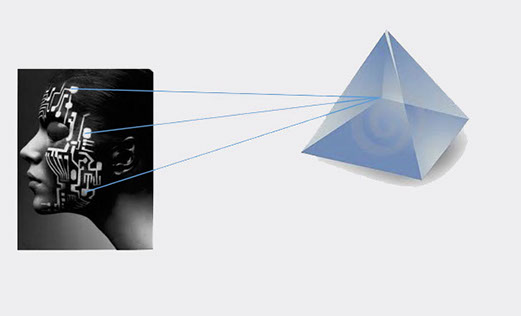Homo futurus

Homo profectus
Homo transhumanus
Homo posthumanus
www.homo-futurus.org
1. At the heart of this trilogy of plays are questions concerning the future of mankind from the point of view of evolutionary theory. The three plays answer with possible scenarios of the future without there being any intention of writing science fiction, e.g. a utopia or dystopia.
2. The evolutionary view: modern man (Homo sapiens sapiens) is a preliminary result of the evolution so far. Were he not able to intervene artificially, the natural evolutionary process would continue to run its course. Since the end of the 20th century, scientific competences have enabled man to intervene consciously and specifically in the process of evolution and ultimately to shape it artificially. The accelerating technological progress will therefore result in extensive genetic self-transformations (through intervention in the genetic make-up of man), but will also bring about staggering non-biological self-transformations (through the development of conscious artificial intelligence, AI). As far as the future of man is concerned, we would therefore really have to speak of a technical revolution rather than of an artificial revolution. All three plays are centred around this technical revolution in the current and the next century.
3. From an evolutionary point of view, it has been possible for some time now to colloquially label three fields of development: the green evolution (keyword: genetically modified plants), the red evolution (keyword: human genetics) and the white evolution (keywords: AI, brain emulation). The green evolution is irrelevant for the plays. Homo Profectus deals with the red line of evolution, Homo Transhumanus with the red and white one and, finally, Homo Posthumanus with the white line of evolution. Moreover, as the plays develop, speculations become stronger that the white evolution will triumph over the red one due to its speed and effectiveness. The future of man is therefore increasingly managed by means of white technology rather than continuing with the red one. In other words, evolution, or the technical development of man, proceeds no longer biologically, but artifactually. The evolutionary tree changes from red to white.
4. Based on modern man (Homo sapiens sapiens) and in view of the red and white technological progress, the trilogy describes three classes of intelligent beings or systems: humanoids, androids and morphoids. The humanoids split into the conventional humanoids (present man) and the transhumanoids (man genetically modified and/or technologically modified by other means). Already there is no clear line of separation between modern man and transhumanoids, for modern man has been intervening with his so-called natural state for a long time (examples: brain stimulants, implants, prostheses, aesthetic body corrections, reproduction technology). The androids are conscious humanoid robots claiming the right to be treated as legal entities just as the humanoids are. The morphoids in their turn are conscious intelligent systems without a fixed body residence and are far superior to both the humanoids and the androids.
5. The three plays remain vague as to what precise changes the red and white technologies will bring about. The changes of the intelligent beings and systems are merely hinted at, as is also the question in what kind of a technically designed world these intelligent beings will live (see #1).
6. The storyline of the trilogy is driven by the Willak family, based on the structure of their thoughts and feelings, their actions, conflicts and changes. The timeline of the three plays stretches over 100 years, with Homo Profectus playing around 2050, Homo Transhumanus in 2100 and Homo Posthumanus in 2150. This time horizon appears to be too conservative; the years 2040, 2080 and 2110 (see Bostrom, N.: Superintelligence, 2013, 1. Past developments and present capabilities) might be more realistic.
7. Motivation: The 21st century is, among other things, a time of extensive changes in red and white technology. The developments could surpass all former radical changes of mankind with their potential for conflict and danger. Not even acts of war can be ruled out, e.g. due to the disparity between societies (technically modified people/societies equipped with AI on the one hand and people who are excluded from AI because they voluntarily or involuntarily do not have any access to it on the other hand). It was both a pleasure and a challenge for me to stage this possible future situation.